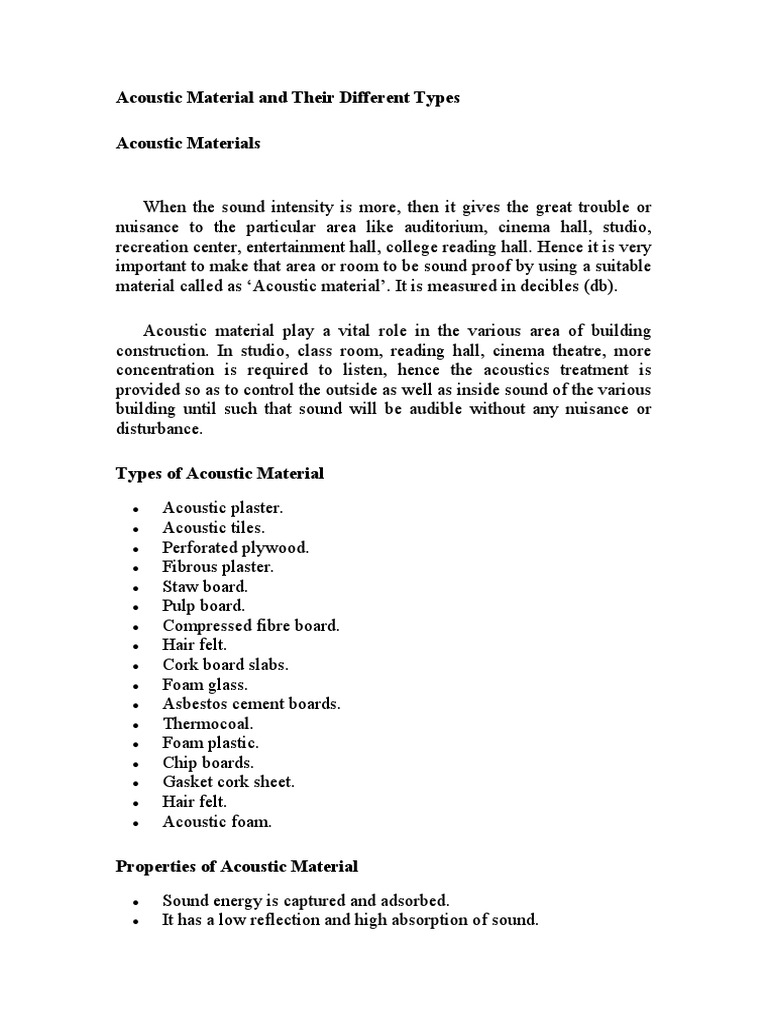
Understanding floor acoustic properties is crucial for creating comfortable and functional spaces. Have you ever been disturbed by noisy neighbors or struggled with unwanted sound echoing in your home or office? Poor floor choices can significantly impact noise levels, affecting productivity, sleep quality, and overall well-being. This article offers a thorough guide to understanding the acoustic properties of various floor types, helping you make informed decisions for optimal sound control. We’ll explore key acoustic metrics, analyze varied flooring materials, and offer practical advice to improve the acoustic environment of your building. Get ready to delve into the science of sound and flooring!
Understanding Impact Insulation Class (IIC) and Sound Transmission Class (STC)
What is IIC?
The Impact Insulation Class (IIC) rating measures a floor’s ability to reduce impact noise, such as footsteps or dropped objects. A higher IIC rating indicates better impact sound insulation. For example, a concrete floor might have a lower IIC rating than a floor with carpet and underlayment. Understanding the IIC rating is essential for reducing noise transmission between floors in multi-story buildings or apartments.
What is STC?
The Sound Transmission Class (STC) rating measures a floor’s ability to reduce airborne sound transmission, such as speech or music. A higher STC rating means better sound isolation. Factors like material density and construction methods play a significant function in determining a floor’s STC rating. Think about how easily you can hear conversations from the room below—a higher STC rating minimizes this issue.
Practical Applications of IIC and STC
Knowing the IIC and STC ratings of varied flooring materials allows architects and builders to make informed decisions during the design and construction stages of a building. This information helps to achieve the required level of sound insulation in accordance with building codes and client requirements. For instance, in residential buildings, achieving a high IIC rating is vital to ensuring comfortable living conditions for residents. Similarly, in commercial spaces, maintaining a high STC rating is crucial for maintaining privacy and productivity.
Related Post : The Best Flooring Choices for Open-Concept Spaces
Case Study: Apartment Building Noise Reduction
Consider a new apartment complex. Using flooring with high IIC and STC ratings significantly reduces noise complaints from residents. An example might involve choosing engineered hardwood with effective underlayment over concrete, optimizing both IIC and STC for a quieter living environment. This outcomes in higher resident satisfaction and potentially reduces legal issues related to noise.
Acoustic Properties of varied Flooring Materials
Carpet and Underlayment
Carpet, especially with dense padding (underlayment), is highly effective in absorbing impact noise. The plush fibers and air pockets within the carpet and underlayment dissipate sound energy. This combination yields a high IIC rating, making carpet an excellent choice for reducing footstep noise in apartments and multi-story buildings. However, carpet’s ability to reduce airborne sound (STC rating) is more moderate compared to its impact noise reduction capacity.
Hardwood Flooring
Hardwood floors, while aesthetically pleasing, generally have lower IIC ratings than carpeted floors. Solid hardwood tends to transmit impact noise more readily than engineered hardwood. Engineered hardwood, due to its layered construction, can offer slightly better sound insulation. Underlayments are frequently used under hardwood to improve its IIC rating. The STC rating of hardwood is also moderate, meaning it doesn’t significantly block airborne noise.
Laminate Flooring
Laminate floors are known for their affordability and durability, but their acoustic performance is generally lower compared to carpet or even engineered hardwood. They usually exhibit moderate impact sound insulation and transmit airborne sounds relatively easily. Using appropriate underlayment can help improve the IIC rating of laminate floors, but the STC rating typically remains relatively low.
Vinyl Flooring
Vinyl flooring exists in various types, and acoustic properties can vary significantly. Luxury vinyl plank (LVP) and luxury vinyl tile (LVT) can offer moderate sound insulation when paired with effective underlayment. Solid vinyl sheet flooring, however, tends to offer less sound insulation. The impact and airborne sound insulation of vinyl flooring often depends on the thickness and density of the material, and using underlayment is beneficial.
Tile and Stone
Tile and stone flooring are very hard surfaces and typically exhibit poor IIC ratings, transmitting impact noise readily. Their sound transmission (STC) characteristics are also relatively low, making them less ideal for environments where noise reduction is paramount. However, certain types of tile and stone combined with specialized underlayment systems can offer slightly improved acoustics. Consider the density and installation method to minimize noise.
Enhancing Floor Acoustic Performance with Underlayment
Types of Underlayment
Underlayment is a crucial component in enhancing the acoustic performance of many flooring types. There are various types, each designed with specific acoustic properties in mind. Some examples include foam underlayment, rubber underlayment, and cork underlayment. Each material offers varied levels of impact and airborne sound reduction. The thickness and density of the underlayment directly affect its acoustic performance; thicker, denser underlayments generally offer superior sound insulation.
benefits of Using Underlayment
Underlayment offers several benefits beyond acoustic improvement. It can create a more comfortable walking surface, cushion impacts, extend the lifespan of the flooring, and offer a smoother installation surface. selecting the proper underlayment for a specific flooring type significantly improves both its IIC and STC ratings. For example, using a high-density rubber underlayment beneath hardwood can noticeably reduce impact noise and enhance the floor’s overall acoustic properties.
Factors Affecting Underlayment Performance
Several factors determine underlayment efficacy. Material type is critical, as each material offers unique acoustic characteristics. Thickness directly impacts sound absorption and insulation. Denser underlayments generally outperform thinner counterparts. Lastly, proper installation is essential; any gaps or inconsistencies can significantly reduce the underlayment’s sound-dampening capabilities. Thorough preparation and attention to detail during installation are key for achieving optimal outcomes.
Case Study: Comparing Underlayment Options
Let’s compare foam and rubber underlayment under laminate flooring. Foam offers budget-friendly sound insulation, but rubber may offer superior performance, especially for reducing impact noise. Measuring IIC before and after underlayment installation offers tangible evidence of the acoustic improvement. This demonstrates the significance of underlayment choice in overall floor acoustic performance.
Choosing the Right Flooring for varied Spaces
Residential Applications
In residential settings, prioritizing comfort and minimizing noise transfer between rooms and floors is crucial. Carpet with dense padding is often preferred in bedrooms and living areas for superior impact noise reduction. In areas where water resistance is crucial, such as bathrooms or kitchens, vinyl flooring with appropriate underlayment can offer a balance between aesthetics, durability, and sound insulation. Hardwood, while aesthetically attractive, often requires underlayment for better noise control.
Commercial Applications
Commercial spaces have specific acoustic needs depending on their function. In offices, minimizing noise distractions is critical for productivity. Flooring choices should reduce both impact and airborne sound. Carpet tiles with underlayment often strike a good balance between aesthetics, comfort, and acoustics. In retail spaces, the focus might shift towards durability and ease of cleaning, with vinyl or other resilient flooring options being considered. Acoustic considerations should still remain a factor in the selection process.
Public Spaces
Public spaces like schools, hospitals, and libraries require particular attention to acoustics. Noise levels need to be controlled to maintain a calm atmosphere conducive to learning, healing, or quiet study. Carpet or resilient flooring with high-impact and airborne sound reduction capabilities is often ideal. The material’s durability and ease of maintenance are also crucial factors to consider given high traffic and the need for easy cleaning.
Case Studies: Tailoring Flooring Choices
Consider a school library needing quiet study spaces. Carpet tiles with thick underlayment would create a quiet environment. In contrast, a busy hospital corridor might benefit from resilient flooring with moderate acoustic properties that is easy to clean and maintain. Tailoring flooring choices to specific needs is essential for optimal outcomes.
Advanced Techniques for Noise Reduction in Floors
Floating Floors
Floating floors involve installing a resilient underlayment layer between the subfloor and the finished floor, decoupling the two and reducing sound transmission. This creates an air gap that absorbs vibrations and reduces impact noise. The efficacy of a floating floor is heavily dependent on the underlayment material and the quality of installation. This approach is particularly useful in situations where high levels of sound insulation are needed.
Resilient Channels
Resilient channels are metal channels that are attached to the subfloor and used to support drywall or ceiling tiles. This creates an air space between the ceiling and the subfloor, effectively reducing sound transmission. The channels decouple the ceiling from the subfloor, thereby reducing impact and airborne noise. This is an advanced technique optimal suited for experienced contractors.
Acoustic Decoupling Membranes
Acoustic decoupling membranes are specialized materials designed to isolate the subfloor from the finished flooring layer, reducing impact and airborne sound transfer. These membranes often incorporate high-density materials with vibration-dampening properties. They’re an effective addition to floating floor systems or other advanced soundproofing strategies. Proper installation is crucial for their efficacy.
Case Study: Multi-Layered Acoustic Systems
In scenarios requiring maximum noise reduction, combining multiple techniques is often necessary. A multi-layered system might include a resilient channel system, acoustic decoupling membranes, and a floating floor with dense underlayment. Such complex installations require specialized knowledge and meticulous attention to detail to yield optimal outcomes. The combined approach can dramatically reduce both impact and airborne noise transmission.
In conclusion, understanding the acoustic properties of varied floor types is crucial for creating comfortable and functional spaces. By carefully considering factors like impact insulation class (IIC) and sound transmission class (STC) ratings, along with material properties, architects and builders can significantly improve the acoustic environment of a building. Choosing the right flooring can dramatically reduce noise transfer, enhancing privacy and improving the overall quality of life for occupants. Remember to consult with acoustic experts for complex projects or when dealing with stringent noise control requirements. Start planning your next project with a focus on acoustics; the peace and quiet will be worth it!
